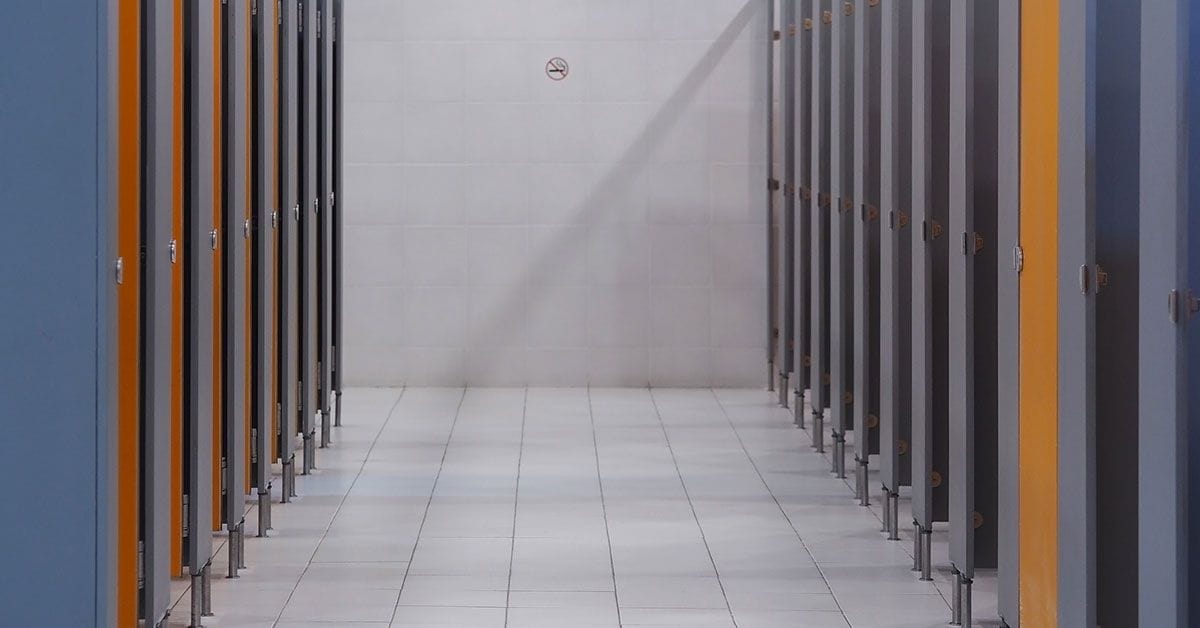There is interest in water-repellent coatings across various industries. These coatings have potential to drive anti-icing, anti-fouling, and anti-corrosion innovations—including applications in the bathroom.

Bacterial infection is a pressing global healthcare challenge, leading to increased mortality and medical costs—and with increased antimicrobial resistance driving a risk of persistent infections. A key transmission route is high-touch surfaces, including sanitary ware in public places. During infection, people may have high levels of bacteria in their urine, and some of these are able to form colonies inside toilet bowls. These are then released into the air in an aerosol plume with every flush, eventually settling on all other surfaces within a 5-foot radius. To help prevent infections and deaths, anti-biofouling coatings on sanitary ware could be a promising solution.
A key feature of water-repellent coatings is the easy removal of water droplets, even at low sliding angles. New work published in ACS Applied Materials & Interfaces describes how low-cost and biocompatible materials such as poly(dimethylsiloxane) can be used for large-scale preparation of liquid-like coatings that can be grafted on to glass, silicon, or ceramic simply by brushing on, or drop-casting.1
Grinding the silicone oil in a ball mill for an hour helps to break apart some of the polymer’s chemical bonds and form new molecules. The team hypothesized that the milled oil would graft quickly and form a durable, oily layer on surfaces. This layer would allow droplets to slide at angles less than 20°, preventing the formation of biofilms. When tested on a regular-size toilet bowl, the grafted surfaces achieved a 105-fold decrease in the attachment of bacteria from urine. These findings highlight the significant potential of mechanochemical processes for the practical preparation of liquid-like surfaces.
Previous work from the team has explored other superhydrophobic coatings made from silica nanoparticles and carnauba wax, which—in addition to repelling water—has the benefit of being self-healing in just under a minute with moderate heating.2 This could be a game-changer, since until now almost all methods relied on creating a rough surface with low surface energy. These are susceptible to damage and have weak durability—plus, they are often fabricated from perfluorinated chemicals and petroleum-based long-chain hydrocarbons, which have inherent environmental and health implications.
Another 2023 paper in ACS Applied Materials & Interfaces demonstratedd how antimicrobial and plasmonic surfaces can be generated based on nanostructures, which could be useful for wound dressings, masks, and protective medical equipment.3 The fabricated nanostructured surfaces had excellent bactericidal efficiency, as well as antifungal activity against Candida albicans, a common pathogenic fungus.4
These studies show that antibacterial surfaces are a realistic option for helping to control common pathogens, and that they can be simple and cheap to manufacture and apply.
References
- Celik, N. et al. Mechanochemical Activation of Silicone for Large-Scale Fabrication of Anti-Biofouling Liquid-like Surfaces. ACS Appl. Mater. Interfaces 2023, 15, 46, 54060–54072.
- Celik, N. et al. Self-Healing of Biocompatible Superhydrophobic Coatings: The Interplay of the Size and Loading of Particles. Langmuir 2023, 39, 9, 3194–3203.
- Sahin, F. et al. Disintegration and Machine-Learning-Assisted Identification of Bacteria on Antimicrobial and Plasmonic Ag–CuxO Nanostructures. ACS Appl. Mater. Interfaces 2023, 15, 9, 11563–11574.
- Sahin, F. et al. One-step Green Fabrication of Antimicrobial Surfaces via In Situ Growth of Copper Oxide Nanoparticles. ACS Omega 2022, 7, 30, 26504–26513.
